I built an SMPS (see here for details), and so far it's been working good. But I noticed a strange oscillation (or ringing?) at the output.
Here's what it looks like, with a 4 amps load:

Now, you'll see a HF oscillation when the switch turns on (right at the center of the image, for example). I measured this at 15MHz and figured the MOSFET needed a snubber. I added one (10nF + 10R in series, across D and S), and the 15MHz ringing went away completely.
But I still have that "larger" ringing that can be seen in the picture, around 3.5-4MHz.
What is this ringing?
Is it harmful?
If it is: How can I fix it?
EDIT: Here are some measurements (transient response, voltage across MOSFET and diode, etc). http://imgur.com/a/Qs351